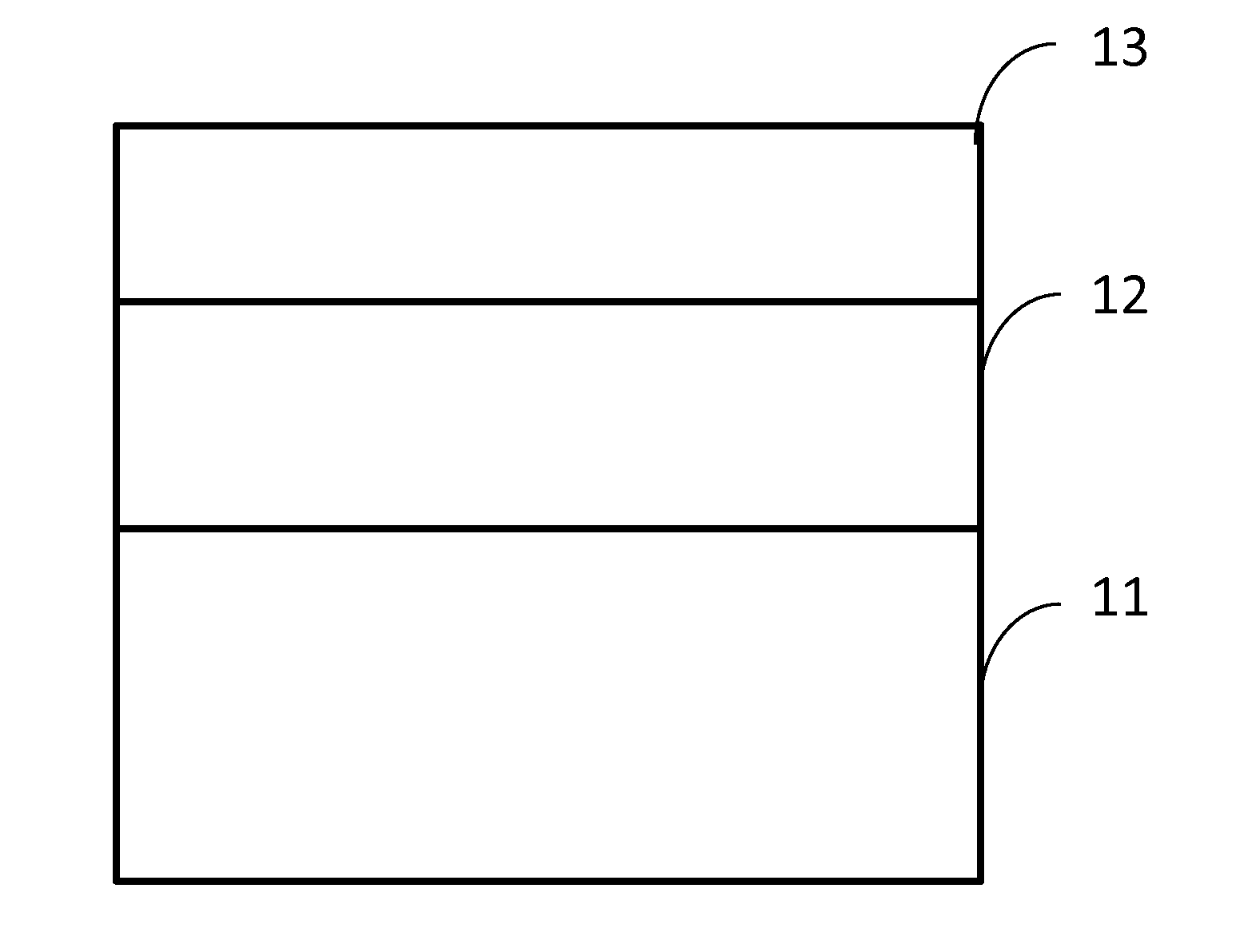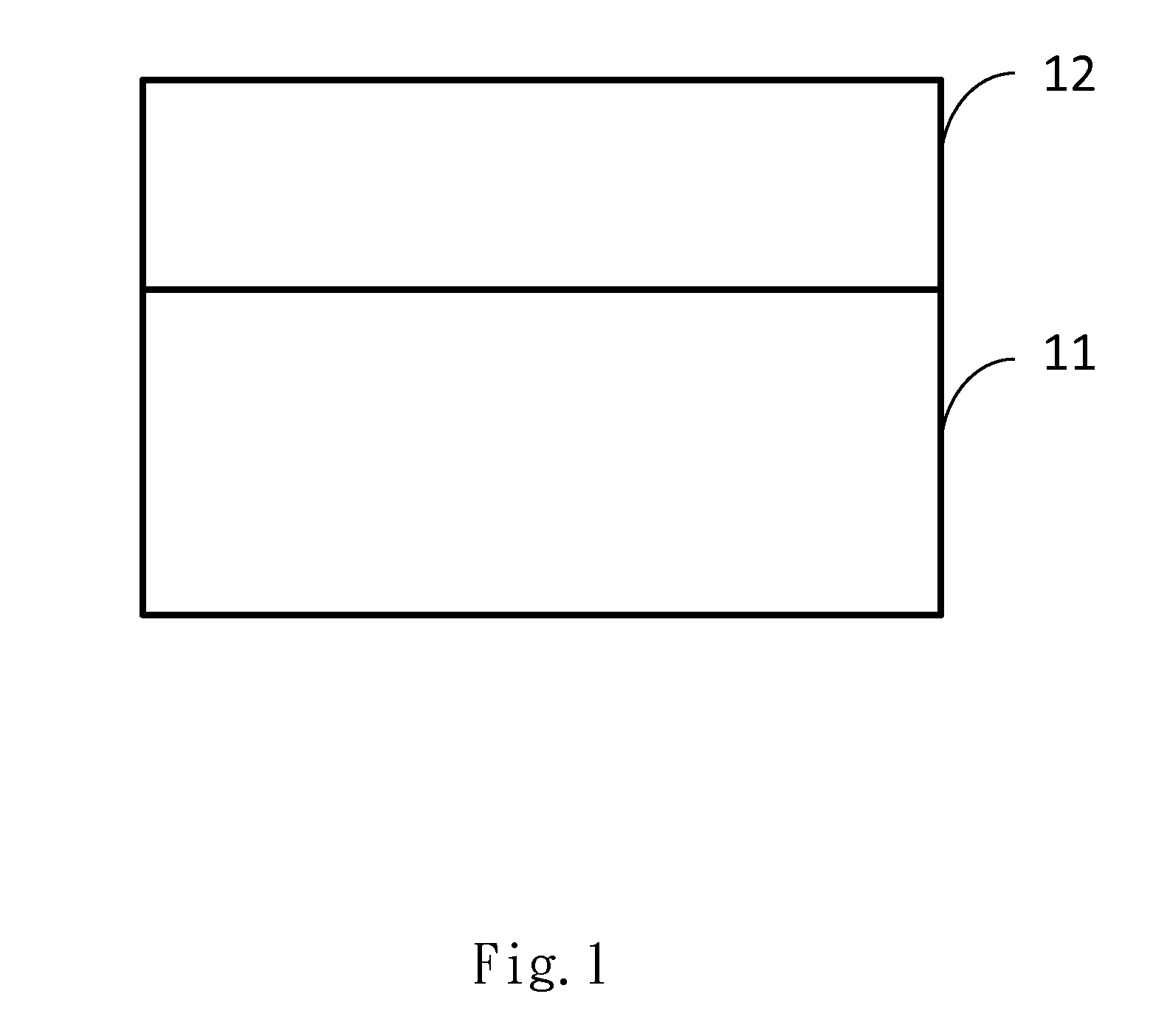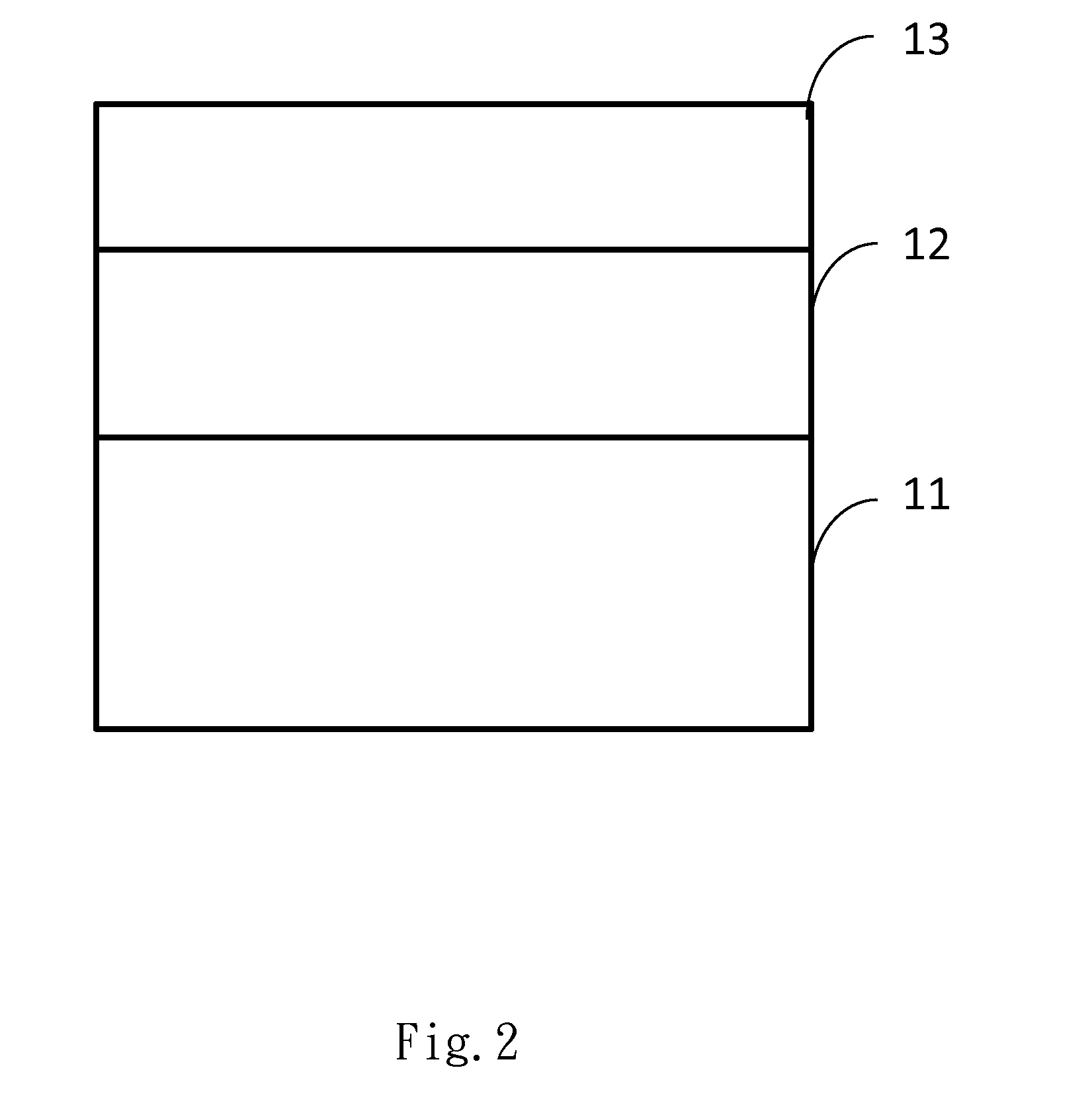LED epitaxial Structure
a technology of epitaxial structure and led to, which is applied in the direction of electrical apparatus, semiconductor/solid-state device manufacturing, and semiconductor devices. it can solve the problems of poor cooling capacity, low cost, and cost increase, and achieve good lattice matching, heat dissipation, and light-emitting efficiency. the effect of good improvemen
- Summary
- Abstract
- Description
- Claims
- Application Information
AI Technical Summary
Benefits of technology
Problems solved by technology
Method used
Image
Examples
Embodiment Construction
[0016]With reference to FIG. 1, the LED epitaxial structure provided by the embodiment of the present invention is an epitaxial substrate, which is composed of a first layer thin film 11 and a second layer thin film 12.
[0017]First of all, the first layer thin film 11 is used as a substrate and an epitaxial process is processed on one side of the first layer thin film 11. An organometallic compound is converted into the second layer thin film 12 on the side of the first layer thin film 11 via chemical reactions in the epitaxial process of metal organic chemical vapor deposition (MOCVD).
[0018]The first layer thin film 11 is a polycrystalline aluminum nitride thin film; the second layer thin film 12 is a single crystal aluminum nitride thin film.
[0019]Because the aluminum nitride has the advantages of wide energy band gap (6.2 eV), high thermal conductivity (320 W / mK), good electrical insulation, high mechanical strength and chemical stability, and there are good lattice and thermal ex...
PUM
| Property | Measurement | Unit |
|---|---|---|
| epitaxial structure | aaaaa | aaaaa |
| structure | aaaaa | aaaaa |
| energy band gap | aaaaa | aaaaa |
Abstract
Description
Claims
Application Information
 Login to View More
Login to View More - R&D
- Intellectual Property
- Life Sciences
- Materials
- Tech Scout
- Unparalleled Data Quality
- Higher Quality Content
- 60% Fewer Hallucinations
Browse by: Latest US Patents, China's latest patents, Technical Efficacy Thesaurus, Application Domain, Technology Topic, Popular Technical Reports.
© 2025 PatSnap. All rights reserved.Legal|Privacy policy|Modern Slavery Act Transparency Statement|Sitemap|About US| Contact US: help@patsnap.com



